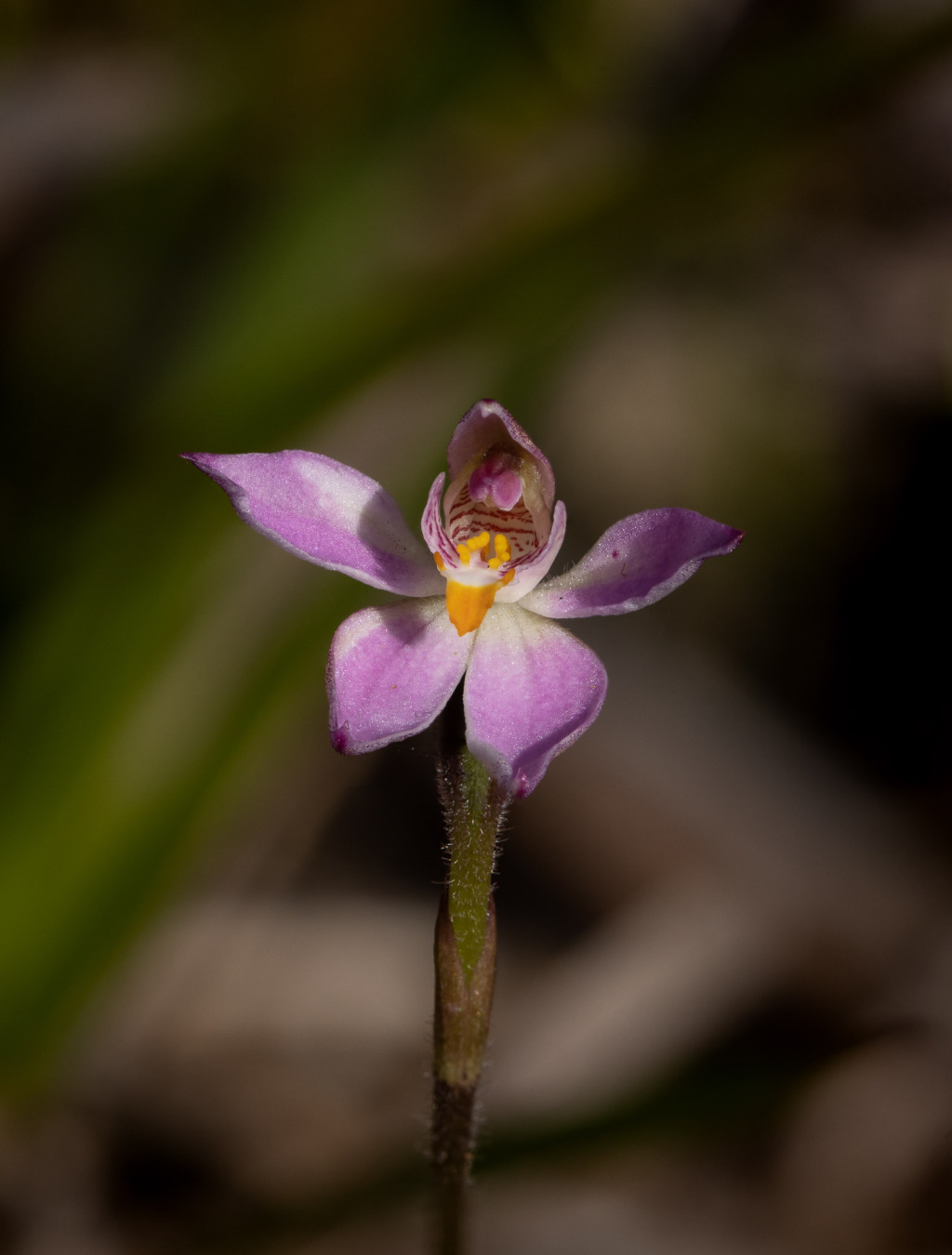Caladenia alata
R.Br.Flowering plant slender, 8–24 cm tall. Leaf linear, 3–13 cm long, c. 1 mm wide. Flowers 1 or 2, white or less commonly pink, with some yellow or orange on labellum; ovary c. 5–6 mm long; perianth segments 7–11 mm long, with tapering tips, outside of segments glandular-hairy at base; dorsal sepal erect, narrowly elliptic; petals and lateral sepals spreading, asymmetrically ovate-lanceolate. Labellum on very short claw, 3-lobed, c. 5–6 mm long (when flattened), white or pink, with purple transverse bars; lateral lobes prominent, broad, margins entire; mid-lobe recurved in distal half, long-triangular, usually as long or longer than lateral lobes, with a prominent stalked, orange gland on each side at base, margins wavy or with a few round lobes, tip of labellum yellow or orange; lamina calli in 2 rows almost to base of mid-lobe, stalked and clubbed, yellow. Column incurved, narrowly winged, whitish, barred red; anther with long point. Flowers Sep.–Oct.
GleP, GipP, EGL, HSF, Strz. Also Qld, NSW, Tas. New Zealand. Distributed east from Wilsons Promontory where found in open-forest, usually near the coast, or sometimes in and around grasstree plains in moist sandy soils.
The pair of prominent calli at the base of the labellum mid-lobe characterize this apparently rare species. There is some variation in the reported size of the flowers which are generally smaller than those of Caladenia carnea. Most Victorian plants seem to be relatively large for the species.
Reports of this species from west of Melbourne are apparently due to the misidentification of other species.
Entwisle, T.J. (1994). Orchidaceae. In: Walsh, N.G.; Entwisle, T.J., Flora of Victoria Vol. 2, Ferns and Allied Plants, Conifers and Monocotyledons, pp. 740–901. Inkata Press, Melbourne.
 Spinning
Spinning


